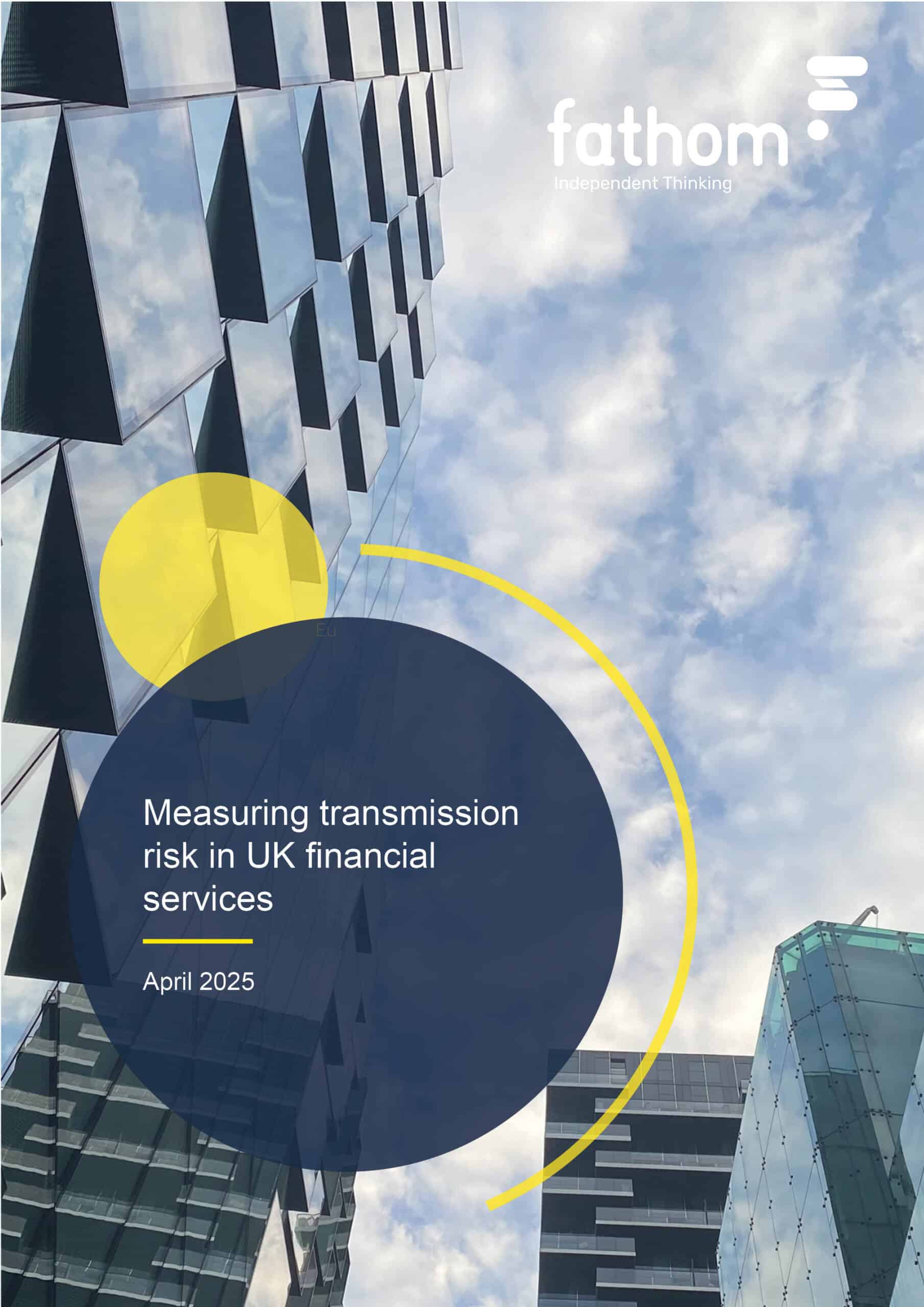Measuring transmission risk in UK financial services
Two new approaches
Ahead of the Global Financial Crisis of 2008/09, mistakes were made. Financial institutions, whose connectivity through the rest of the financial system was not clearly understood, were allowed to fail. That prompted new research, aimed at designing tools to assess the system properties of financial networks and, in particular, to identify 'systemically important' nodes within those networks.
Getting on two decades on from the financial crisis, and over a decade since its final reverberations faded across the euro area. Over that period, risks to the global financial system have been contained. But now, with the uncertainty and volatility induced by a series of events that began with COVID, followed by Russia's invasion of Ukraine and the second Trump administration's attempt at reshaping global trade, concerns have reignited that financial risk might be rising again.
With this environment in mind, Fathom addressed a project on behalf of the Financial Conduct Authority, aimed at finding new ways of capturing risks to financial networks, and the way in which risk is transmitted through and potentially amplified by the network.
Report at a glance
This report develops two new ways of assessing financial network risks: minimum spanning trees (MSTs) and directed network graphs (DNGs).
The MST approach measures the 'closeness' of each entity in a given network to every other entity, and maps the shortest route that connects all entities in the network without creating a circle. There are many inferences that can be drawn from such a map:
- The likeliest path that a shock would take through such a system, if we knew the location of the source of that shock
- The entities that are most 'central' in the system, with the highest degree of connectedness to other entities
- The entities that occupy the most important 'between' locations in the system, connecting one centre of gravity to another or others
- How the MST structure of the system is affected by major shocks like the Global Financial Crisis (GFC)
The diagram below shows the MST for the UK financial system before and after the GFC. In the report, we show how that structure changed in response to another potentially systemic shock — Brexit; and also how it stands now.
The two MSTs above show how the financial network changed during the GFC. In the second MST we see a much wider dispersion of the green-shaded entities — the banks — through the system. This confirms how the post-GFC regulatory and monetary policy regimes made the risk of inter-bank contagion much less likely.
The DNG approach serves a different purpose from MSTs, by uncovering causal relationships in risk transmission. While MSTs focus on the least costly way to connect all nodes in a network, DNGs allow researchers and policymakers to determine whether entities act as transmitters or receivers of risk. This makes them a critical tool both to assess systemic vulnerabilities and financial contagion and also to identify to some degree the direction of causation in the system.
As before, in the report we use DNGs to assess changes to the structure of the UK financial system that occurred during the GFC and as a result of Brexit, as well as looking at how the system now stands. The pre- and post-GFC DNGs are shown here:
The DNGs above show how, pre-GFC, there was a cluster of strongly interconnected 'receivers' of risk (ringed in red), who were located relatively far from the highly leveraged banks at the epicentre of the crisis. That structure was probably one reason why the banking crisis was largely contained within the banking sector in the UK. Post-GFC, regulation appears to have created a greater degree of risk dispersion through the system as a whole, though there remains an interesting and strongly interconnnected cluster of orange-shaded 'other' entities, which probably includes some shadow-banking institutions.
Key inferences
Ahead of the Global Financial Crisis, banking regulators struggled to understand the complex network of interconnectedness in the global banking sector. Since then, a variety of tools of financial network analysis have been developed. The Fathom study shows how two of these can be developed and applied to the UK banking system, revealing patterns of potential risk and channels of potential contagion. Tools like these provide regulators with a better handle on systemic risk arising from complex networks.
"We've made supporting growth a priority in our 5-year strategy. As an evidence-led regulator, we want to understand how best to do that. While the research findings offer valuable insights, they also highlight the complexity of the issue and that further work is needed. By engaging with multiple perspectives, we're helping to shape a more informed and inclusive debate around economic growth."
Kate Collyer, Chief Economist, Financial Conduct Authority
Interactive directed network graphs of the UK financial system
Click on the boxes below to view the individual directed network graphs.
Our focus areas
This report touches on issues related to one of our core focuses.
Meet the team

Andrew Harris
Deputy Chief Economist

Dimos Andronoudis
Senior Financial Economist

Shamik Dhar
Special Adviser

Kris Takoor
Head of Data

Chantelle Kgopo
Junior Data Scientist
Read the report
This research was funded as part of the FCA Economics Research Competition on growth, competitiveness and regulation in the UK financial services sector. It may contribute to the work of the FCA by providing rigorous research results and stimulating debate. Any views expressed are solely those of the author(s) and cannot be taken to represent those of the FCA, or to state FCA policy. While the research may not necessarily represent the position of the FCA, it is one source of evidence that the FCA may use while discharging its functions and to inform its views. To the extent that research contains any errors or omissions, they should be attributed to the individual authors, rather than to the FCA.
To access the report, please fill out the form below.
